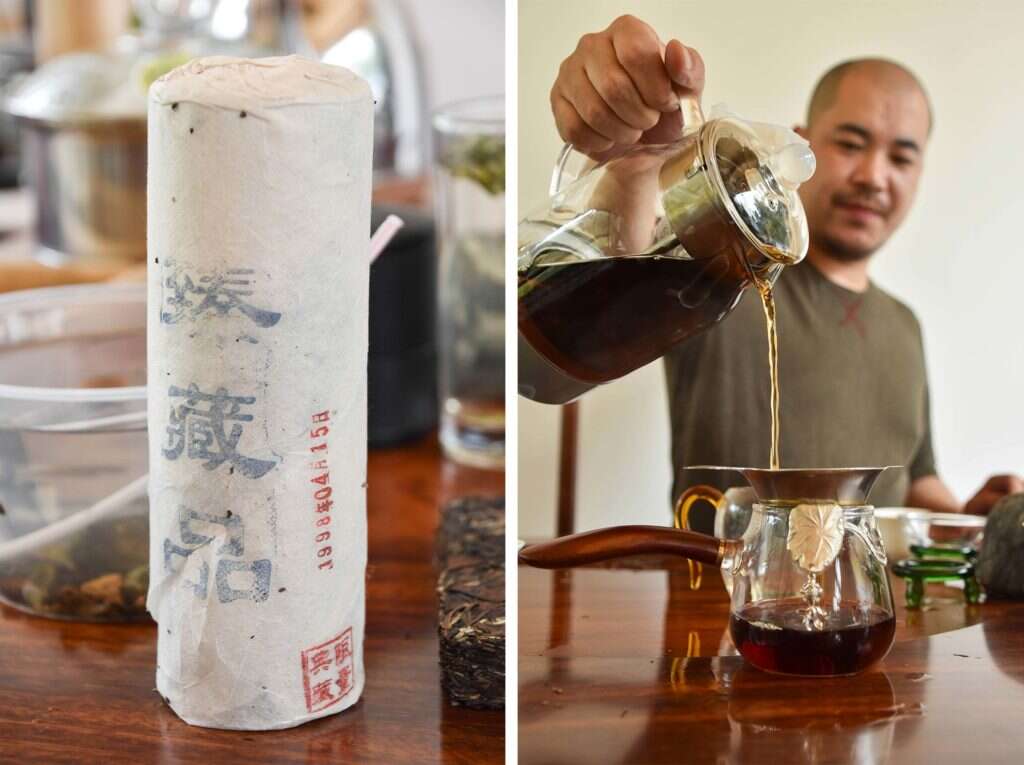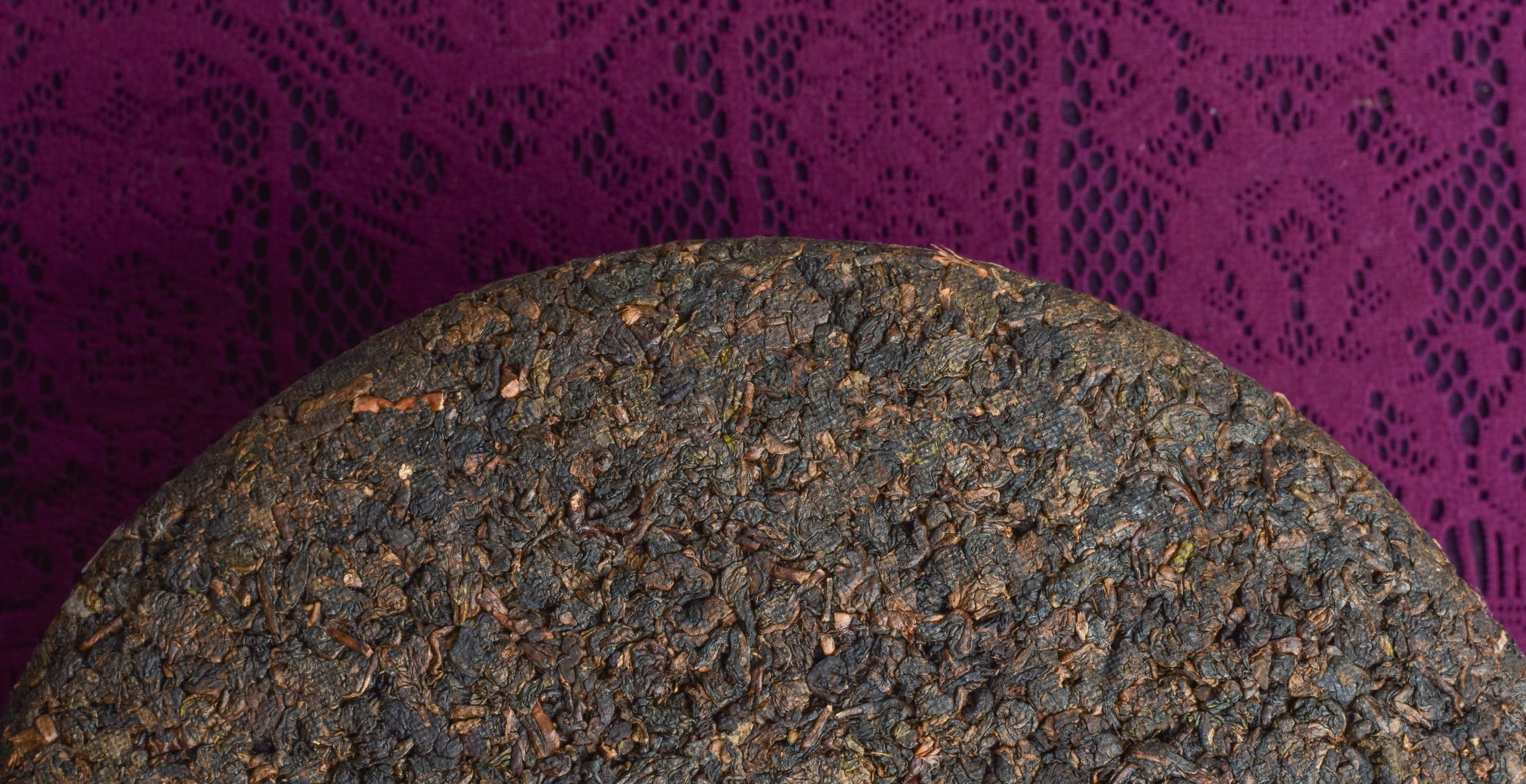When we think of aged teas, we generally think of pu’er, pressed into cakes and wrapped for long term cellaring.
However, this is not the full story. People have been aging white teas, black teas and oolongs across China for generations (traditionally for their medicinal value). Some say that without fermentation, aging cannot take place in tea. However, a simple taste test shows major differences between fresh oolong or white tea and the same tea that has been properly and purposefully aged for many years.

Fermentation is only one possible cause of change
in the flavor, texture, and aroma of a tea.
Tea is full of complex molecules – from sugars and phenols to volatile aromatics. Given enough time and the right conditions, each can transform over time through a variety of complex, natural processes.
Interaction with Air
Oxidation is an important chemical process that can change compounds like phenols into new chemicals entirely.
Think of the last time you left a bottle of wine open, only to come back to it and find that it had changed dramatically. This is due almost entirely to oxidative processes. Any tea being stored long term is going to be interacting with oxygen, even if it is sealed. This oxidative process breaks apart “pre-cursors” like glycosides, lipids, and others. These are compounds natural to tea that have the potential to contribute to the flavor and aroma. These become flavanols like β-ionone (which is responsible for part of the woody foresty flavor in tea), hexanol (which contributes to leafy green taste) and many others.
Interaction with Water
Hydrolysis is possible in tea because no tea is finished to 0% moisture. There is always residual moisture in finished tea, usually around 3% depending on the tea.
During original processing or within the fresh tea leaves, it is possible for aromatic compounds like terpenes (for example linalool, a molecule responsible for sweet florals) to be glycosidically-bound. These bound aromatic compounds are essentially stuck, not adding to flavor or aroma. Interaction with water can “unbind” these flavors and release them. Hydrolysis can express in many ways depending on the chemical components involved, some of which have the potential to affect the flavor and aroma of a tea.
Maillard Reaction
The toasty, rich, dark flavors that people aim to bring out when people are aging red wine are largely due to Maillard reaction. This reaction is most familiar in the kitchen when you grill meat and get that caramelized flavor.
However, heat is not necessary for Maillard. Amino acids in tea can interact with other compounds in what is called “Strecker Degradation.” In tea leaves, theanine and sugars play a role in a complex transformation that yields pyrazine, (a molecule that we perceive as nutty and roasted), all without further heat beyond the initial roasting and finishing of the tea.
Greater than the sum of its parts
These chemical interactions are often codependent steps that work together in a fascinatingly complex way. In properly aged tea, these processes take the rich chemical makeup of tea and transform it into something new and beautiful. Despite being nearly dry and pre-finished with heat, aging under proper storage conditions gives the tea time to allow these transformations to take place.
.
It is exciting to see these interactions play out
even in teas not famous for aging.
With this in mind, we broke open a cake of the Liu Family’s 2010 aged Tieguanyin.
While we’ve had many aged oolongs from Master Zhang (as far back as 1985 harvest!), the statement the Liu Family makes by pressing their tea into a cake evokes the tradition of pu’er, and it got us thinking about the heritage of oolong aging.
For example. Master Zhang has told us about stuffing Tieguanyin in jars of honey or in oranges when he was a child. These teas were kept in honey for decades or more, and used as a medicine when feeling unwell. His mother always used to feed him aged tieguanyin honey or boil it in a large pot, and he remembers how much better he would feel after tasting. Similarly, the Li Family still stuffs oolong and black tea in citrus fruits for aging every year – a tradition that has been carried on in the family at least since Li Xiangxi’s great grandfather was a child.

Our tasting of the 2010 Tieguanyin cake was really informative, and especially fun after refreshing ourselves with some basic flavor chemistry. The aroma upon opening the cake was full of aromatic and dark fruit with cooling notes of camphor. We broke off a small piece of the cake and steeped it with spring water at a full boil in a porcelain gaiwan and tasted in tall porcelain cups to trap the most aroma.
The first steeping was full of juicy nectarine with spicy, sweet cinnamon notes and cooling menthol. The cooling, woody quality in the cake is not present in any of the Liu Family’s fresh teas, so it was really exciting to see that flavor developing as part of the aging process.
In later steepings we could taste the fresh notes of creamy saffron you get with a greener tieguanyin, but accented by spice and cooling. The more we brewed the tea, the more tingling and mouthwatering it became.
We continued through two pitchers of water and about 18 steepings, and observed that the tea made us all feel a lot more energetic than we expected. It was as though the caffeine level was proportionally higher than the L-Theanine compared to other Tieguanyin we taste.
We are excited to continue exploring the effects of aging on oolongs, white teas and black teas, and will be sure to set aside a few cakes to check back on every year. The potential for transformation is so great, it is impossible to resist!
While finishing a tea is all about the control and skill of the craftsman in bringing out desired chemical reactions, the aging process is very much up to the inherent chemical breakdown of the tea itself. After the craftsman finishes their work – a craft which can sometimes span years of reroasting – it is a joy to see the “craft” that the tea practices on itself over many years to become something new and worthwhile.
Want to learn more about the science of tea aroma and flavor formation?
Read <> by Chi-Tang Ho, Xin Zheng, Shiming Li


 How To
How To Myths & Legends
Myths & Legends Travelogue
Travelogue Tasting Journal
Tasting Journal Talking Shop
Talking Shop Tea 101
Tea 101 Watch
Watch Teaware
Teaware News
News









Leave a Reply